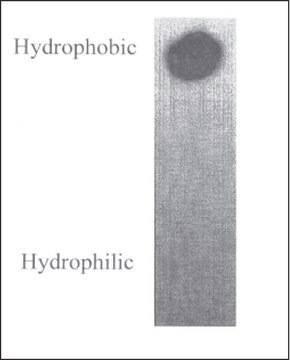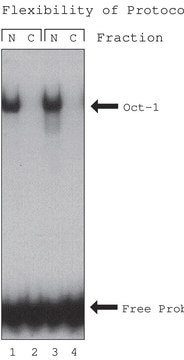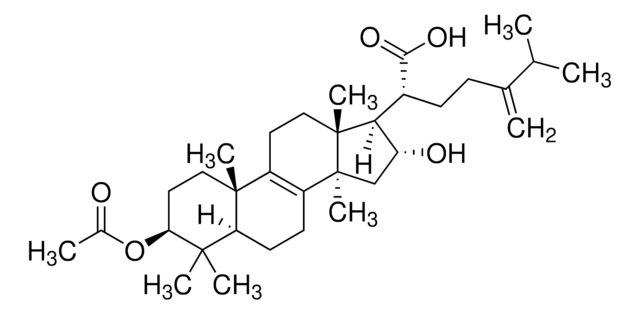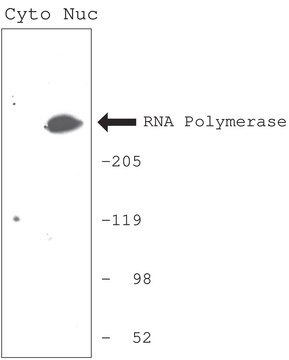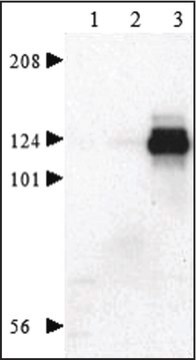Recommended Products
storage temp.
2-8°C
Quality Level
Related Categories
General description
ProteoPrep® Membrane Extraction Kit reagents utilize a powerful detergents for higher loading and resolution of proteins in 2D gels. Protein Extraction Reagent Types 3 and 4 are optimized for proteomic studies. Extraction reagents 3 and 4 are ideal for protein extraction prior to isoelectric focusing and 2D electrophoresis. This kit also includes reagents for the reduction and alkylation of disulfide bonds. The ProteoPrep® Membrane Extraction Kit was designed through a collaboration of Proteome Systems and Sigma research scientists.
Application
ProteoPrep® Membrane Extraction Kit is designed to prepare highly enriched membrane protein solutions from many types of cells. The final protein solution are suitable for 2D gel electrophoresis.
Features and Benefits
- Innovative detergent preparations - Improved solubility allows for higher protein loads and greater visibility of low abundance proteins in 2D gels.
- Two pre-mixed solubilization solutions - Removes interfereing non-membrane proteins prior to extractions, resulting in uncluttered 2D arrays.
- Pre-measured reducing & alkylating reagents - Easy-to-use reagents provide improved IEF resolution.
Legal Information
ProteoPrep is a registered trademark of Merck KGaA, Darmstadt, Germany
signalword
Danger
Hazard Classifications
Acute Tox. 3 Oral - Aquatic Chronic 2 - Carc. 2 - Eye Dam. 1 - Repr. 1B - Resp. Sens. 1 - Skin Corr. 1A - Skin Sens. 1 - STOT SE 3
target_organs
Respiratory system
Storage Class
6.1C - Combustible, acute toxic Cat.3 / toxic compounds or compounds which causing chronic effects
wgk_germany
WGK 3
flash_point_f
186.8 °F - closed cup
flash_point_c
86 °C - closed cup
Certificates of Analysis (COA)
Search for Certificates of Analysis (COA) by entering the products Lot/Batch Number. Lot and Batch Numbers can be found on a product’s label following the words ‘Lot’ or ‘Batch’.
Already Own This Product?
Find documentation for the products that you have recently purchased in the Document Library.
Customers Also Viewed
Lili Xu et al.
The Journal of general virology, 90(Pt 11), 2695-2703 (2009-07-25)
Raccoon dog is one of the suspected intermediate hosts of severe acute respiratory syndrome coronavirus (SARS-CoV). In this study, the angiotensin-converting enzyme 2 (ACE2) gene of raccoon dog (rdACE2) was cloned and sequenced. The amino acid sequence of rdACE2 has
Sreepriya Nair et al.
Electrophoresis, 32(24), 3621-3629 (2011-11-22)
Performing 2-DE of lipid-rich multilamellar membranes like myelin is a cumbersome task. However, for understanding its molecular organization and changes during diseases, identification of proteins of myelin is essential. Although the 2-D-proteomic approach of myelin has been employed to understand
Fang Chen et al.
Proteomics, 7(9), 1529-1539 (2007-04-05)
Plant plasma membrane (PM) proteins play important roles in signal transduction during defense response to an attacking pathogen. By using an improved method of PM protein preparation and PM-bound green fluorescent protein fusion protein as a visible marker, we conducted
Carla Cacciotto et al.
BMC microbiology, 10, 225-225 (2010-08-27)
Mycoplasmas are the simplest bacteria capable of autonomous replication. Their evolution proceeded from gram-positive bacteria, with the loss of many biosynthetic pathways and of the cell wall. In this work, the liposoluble protein complement of Mycoplasma agalactiae, a minimal bacterial
Haiqing Sheng et al.
Applied and environmental microbiology, 74(16), 5015-5022 (2008-06-17)
Escherichia coli O157:H7 causes hemorrhagic colitis and the life-threatening hemolytic-uremic syndrome in humans and transiently colonizes healthy cattle at the terminal rectal mucosa. To investigate the role of the O antigen in persistence and colonization in the animal host, we
Our team of scientists has experience in all areas of research including Life Science, Material Science, Chemical Synthesis, Chromatography, Analytical and many others.
Contact Technical Service
